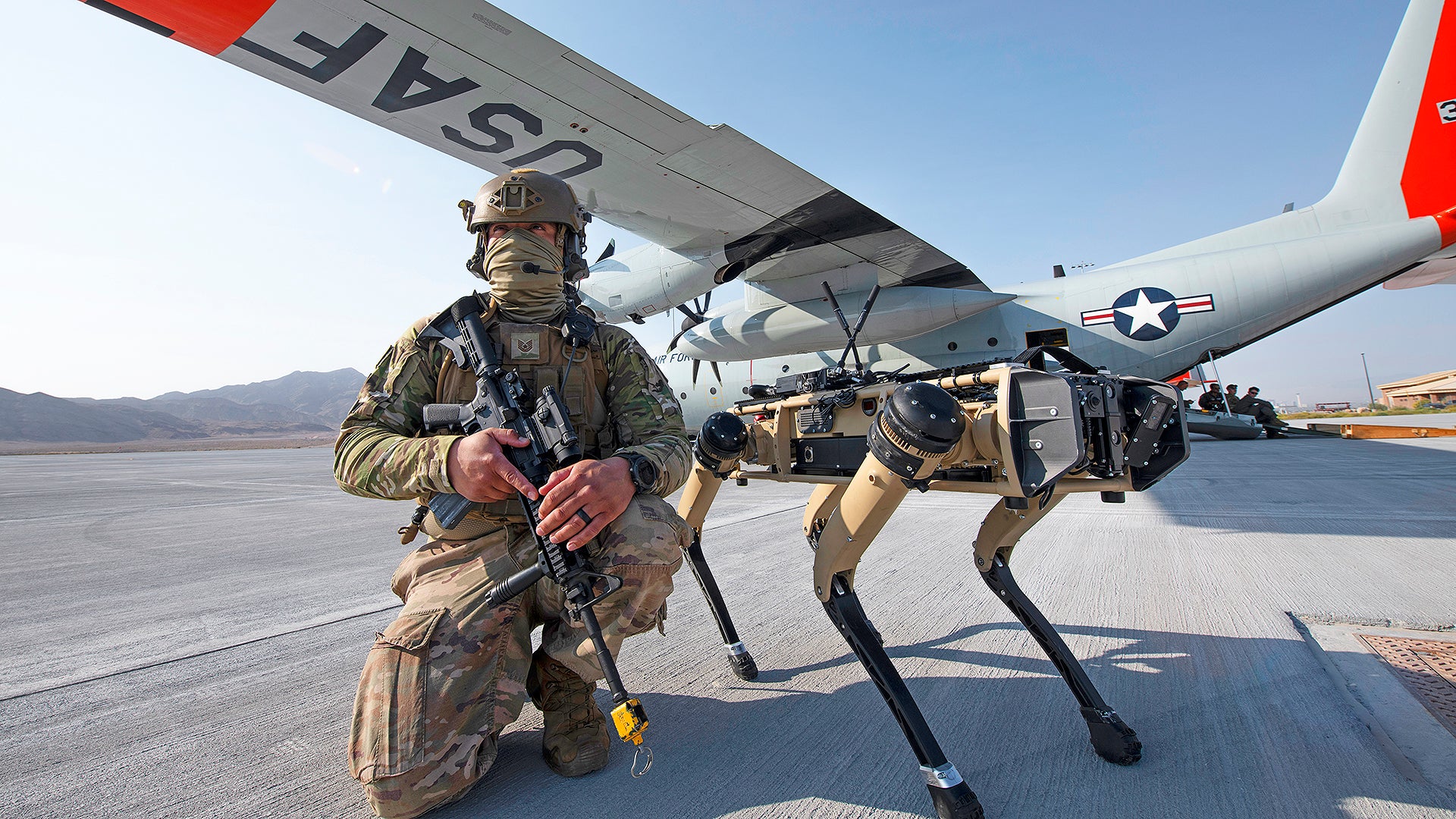They look like they were cast straight from an episode of Black Mirror, and eventually, their mission could be similar in some ways, but for now, robot dogs are stretching their legs in the big test exercise environment for the United States Air Force.
Last week, the U.S. Air Force hosted the second demonstration of its new Advanced Battle Management System (ABMS), a digital battle network system designed to collect, process, and share data among U.S. and allied forces in real-time. The ABMS has already undergone several tests, including a live-fire exercise earlier this year conducted with data and communications provided, in part, by SpaceX Starlink satellites.
The highlight of last week’s demonstration was the use of multiple distributed sensors to detect and shoot down mock Russian cruise missiles. The system involves 5G and 4G networks, cloud computing systems, and AI systems to provide an unprecedented level of situational awareness and course of action decision making. ABMS is a top modernization priority for the Department of the Air Force, which is dedicated $3.3 billion over five years to develop and deploy the architecture and related systems. Senior Air Force leaders cite the system as one of the most pressing capabilities for success in several key theaters of operations.
This latest ABMS demonstration was described as being one of the largest joint experiments in recent history, involving 65 government teams from every service including the Coast Guard, 35 separate military platforms, and 70 different industry partners. The exercise spanned 30 different geographic locations and four national test ranges.
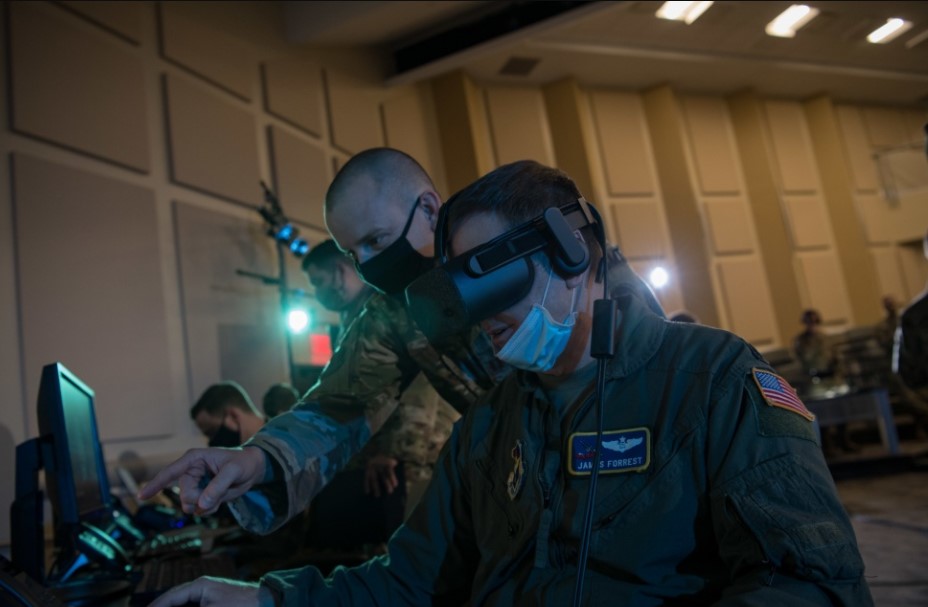
Dr. Will Roper, Assistant Secretary of the Air Force for acquisition, technology and logistics, said the demonstration was intended to test the ability of ABMS to collect and fuse data instantly across geographically-separated forces. “Future battlefields will be characterized by information saturation. One of the key objectives of this onramp was to present a dizzying array of information for participants to synthesize, just like they would see in a real operation,” Roper said in a USAF press release. “This compelled commanders and operators to trust data analytics and artificial intelligence to understand the battle. Valuing data as an essential warfighting resource, one no less vital than jet fuel or satellites, is the key to next-gen warfare.”
In addition to testing the data-gathering and sharing systems, the event also saw the Air Force using quadrupedal “dog” robots for perimeter defense at Nellis Air Force Base. The robots were built by Ghost Robotics and were intended to be a part of the ABMS test which took place earlier this year, but bandwidth issues prevented their use during that event.

The specific model tested at the September ABMS test at Nellis AFB is known as a Vision 60. The Vision 60 is what Ghost Robotics calls a Q-UGV, or Quadrupedal Unmanned Ground Vehicle. The Vision 60 is designed for tasks such as remote inspection, Intelligence, Surveillance, Reconnaissance (ISR) missions, mapping, distributed communications, and persistent security.
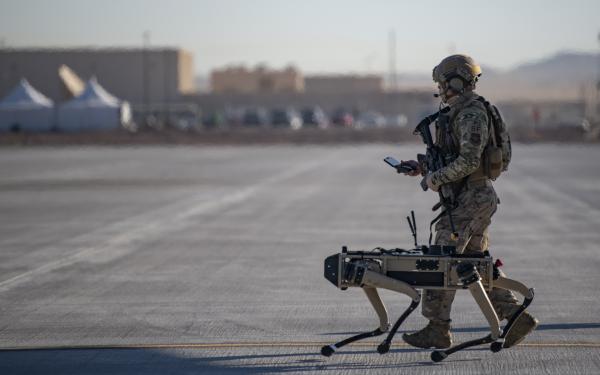
There are few details about the specific technologies tested on the Vision 60 robots used during the ABMS exercise, but images appear to show various configurations, some with a pair of antennae on its back, and another with what appear to be a variety of sensors or communications equipment where its “head” would be. The fact that bandwidth issues prevented an earlier test of the Vision 60 robots points to the fact that the robots are data-linked and can communicate with other systems.
According to the Ghost Robotics website, the Q-UGVs are nearly “unstoppable” and their modular design means they can execute a wide variety of missions:
Beyond all-terrain stability and operation in virtually any environment, a core design principle for our legged robots is reduced mechanical complexity when compared to any other legged robots, and even traditional wheeled-tracked UGVs. By reducing complexity, we inherently increase durability, agility and endurance, and reduce the cost to deploy and maintain ground robots. Our modular design even supports field swapping any sub-assembly within minutes. Strategic partners can build solution-specific Q-UGVs for virtually any use-case with their choice of sensors, radios and even size the robot to suit specific requirements by licensing our reference designs.
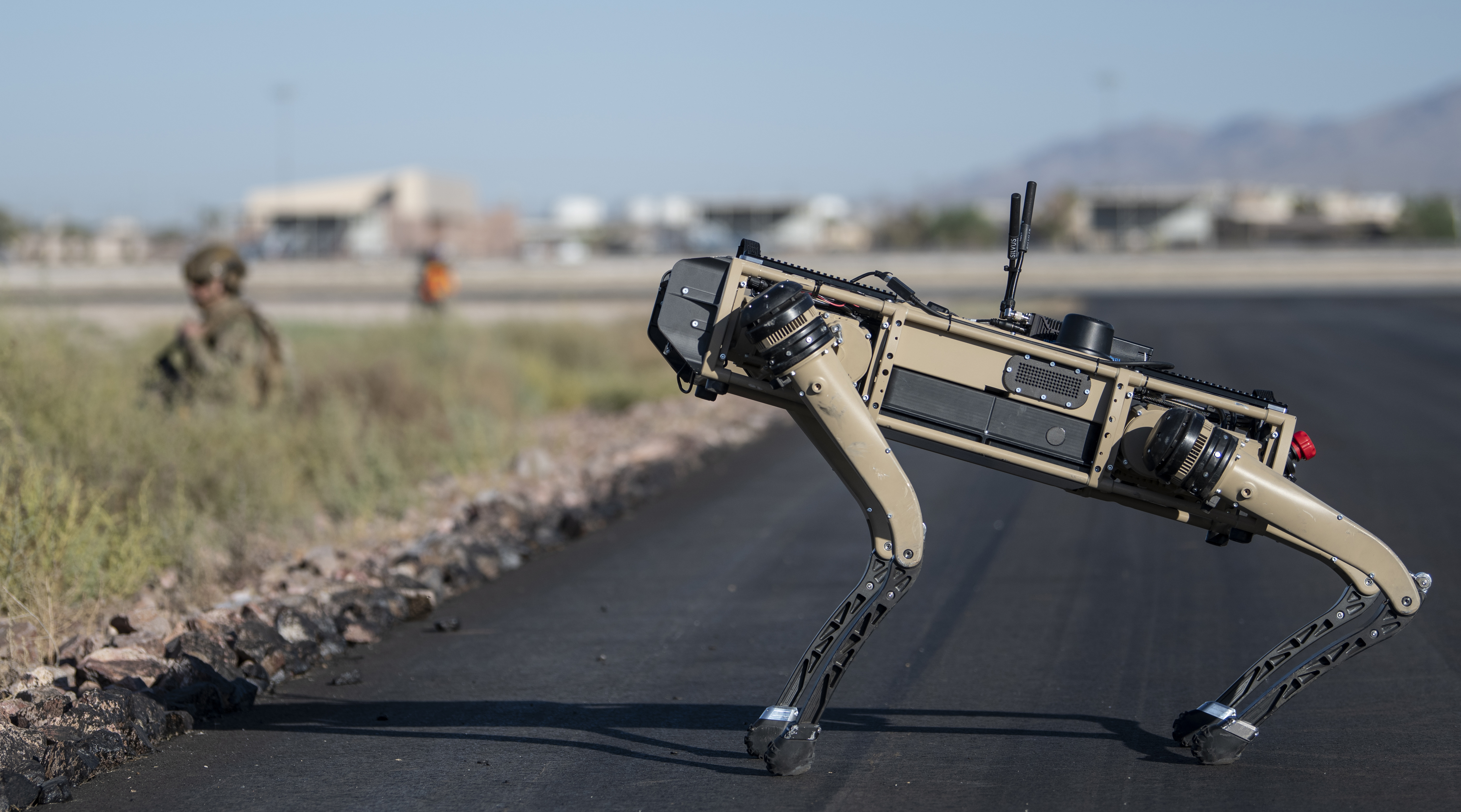
Other units and branches have tested unmanned ground vehicles in the past, but the Vision 60 is a step ahead in some regard to the wheeled or tracked vehicles that have been regularly seen in previous demonstrations. Legged robots are not necessarily new either to the U.S. military when it comes to testing and demonstration events, but the manner in which Vision 60 is smaller, highly modular, and meant to support non-load-bearing tasks is somewhat different.
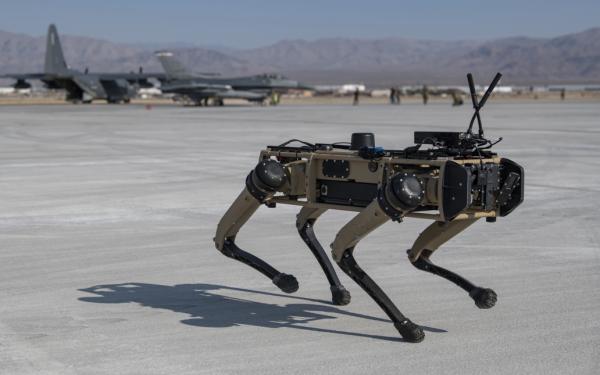
All manner of robotic systems could soon be conducting operations alongside human personnel. Many mundane, dangerous, or physically demanding tasks could soon be offloaded to a soldier’s robotic counterpart. It isn’t hard to see how Vision 60 could play a key role in patrolling perimeters, scouting areas ahead of its human comrades on the battlefield, and investigating objects of interest that could potentially be deadly to a soldier. The latter of which is really an extension of what bomb-squad robots have been doing for decades, although they are far less agile and adaptable to multiple missions.
A ‘robot dog’ like this is also capable of carrying critical information gateways and computer systems that can better link those on the front lines with command and control assets far away, as was the case in this exercise. Even being able to continuously map their surroundings could alert human operators to unseen and potentially dangerous changes to their environment. With the modularity intrinsic to this design, one could image robot dogs outfitted to intercept and geolocate enemy communications or even being used to charge and neutralize threats so humans don’t have to.
It will be interesting to see where Vision 60, and other concepts like it, head in the near future, but clearly what were science-fiction dreams of robots working alongside even the individual soldier just years ago are quickly becoming a reality.
Contact the author: Brett@thedrive.com and Tyler@thedrive.com
